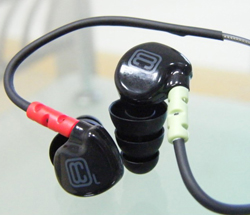
Q: We recently started using in-ear monitoring at my church; however, we’ve noticed that the volume is really hard to control.
It’s all over the place, to the point where the volume is almost painfully loud at times! Can you offer any advice?
A: The advantages of in-ear monitoring systems (IEM) are many, which you’ve undoubtedly already found.
The most obvious advantage, of course, is the ability to reduce the high sound pressure levels (SPL) on stage, thereby producing a cleaner FOH mix as well as reducing possible hearing damage from the aforementioned high SPLs.
However, as you’ve found, IEMs do present their own unique set of challenges. In fact, hearing damage can still occur with in-ear monitors if loud, uncontrolled signals are sent directly to your ear.
The solution is to use a limiter with extreme settings (referred to as brick-wall limiting) to quickly reduce the level of signals that exceed a safety threshold.
To achieve proper ear-safety, set the limiter’s threshold control to a level well below that at which hearing damage can occur. The ratio should be set as high as possible, with 10:1 being the lowest setting.
A ratio of 20:1 or infinity to one (if the compressor/limiter allows) would be optimal. Also, be careful to set a very fast attack time so that transients are reduced, since they can do the most damage. Release time should be set to allow for a natural overall sound without pumping.
For more tech tips go to Sweetwater.com















